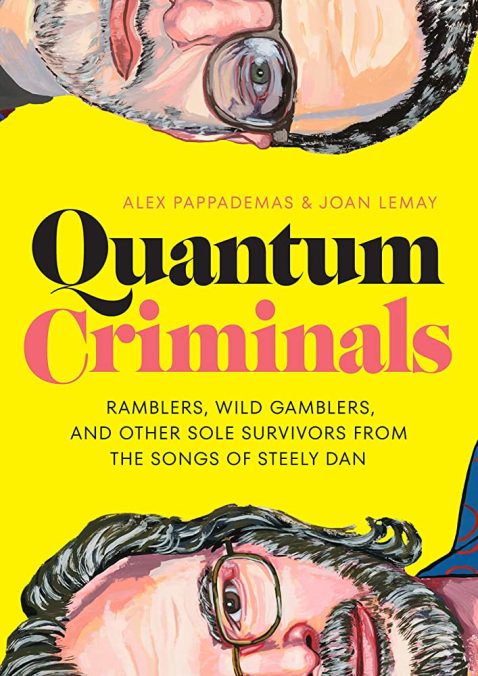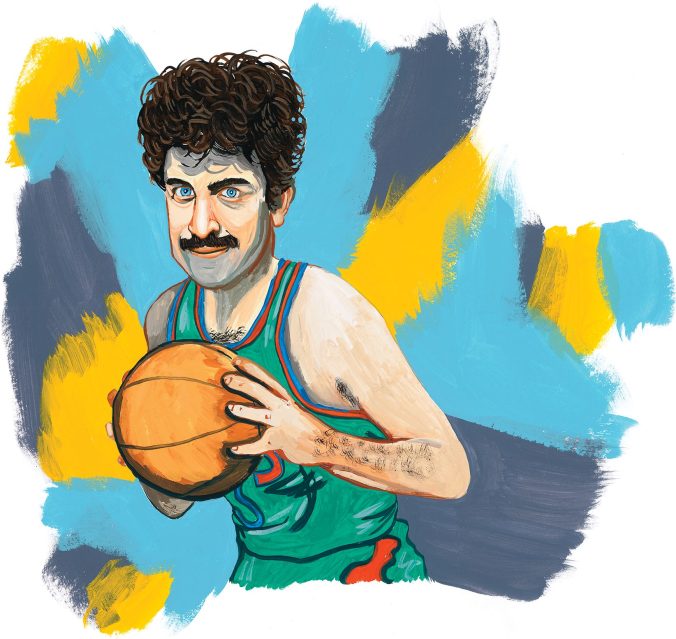Quantum Criminals: How Alex Pappademas and Joan LeMay Brought the Steely Dan Universe to Life
We sat down with the writer and illustrator behind Quantum Criminals, the new, expansive Steely Dan sweeping across the nation
Illustrations by Joan LeMay/Courtesy of University of Texas Press
If you are unfamiliar with the University of Texas Press’ American Music Series, then I implore you to get hip as quickly as you can. From Margo Price’s Maybe We’ll Make It memoir to Lance Scott Walker’s DJ Screw: A Life in Slow Revolution, the books coming out of the Longhorn State are unequivocally changing the landscape of music criticism and history. That’s where Quantum Criminals: Ramblers, Wild Gamblers, and Other Sole Survivors from the Songs of Steely Dan comes in. In one fell swoop, it has become the essential Steely Dan book. And you should absolutely be reading it right now.
Written by Alex Pappademas and illustrated by Joan LeMay, Quantum Criminals delivers an extensive history of the band’s legacy—told almost exclusively through short studies on nearly every character named or featured across Steely Dan’s catalog. From the Expanding Man in “Deacon Blues” to Doctor Wu, Pappademas and LeMay leave no stones unturned in their quest to unlock every mythological quadrant of Steely Dan’s immense, decades-long artistic conceptions. Sleazy, Hollywood serpents be damned; Quantum Criminals gives a few pages to every major player and attempts to piece together the story behind them without skewing Donald Fagen and Walter Becker’s initial vision.
Since getting an advanced copy of Quantum Criminals months ago, I’ve been returning to it over and over again. I’m an avid Dan-Head who often gets fully engrossed in the drug-stupor fantasticals and long-winded, night-soaked anthems of sex, booze and fleeting love. Last week, just a few days after Quantum Criminals hit the shelves, I sat down with Pappademas and LeMay to chat about their process, which included rigorous days of painting amid lockdown and forest fires, stumbling down non-Steely Dan rabbit holes and imagining a sequel book of just Walter Becker songs. Here is the raw, unfiltered, exclusive lowdown on Quantum Criminals, as we crawl like vipers through these suburban streets together.
Paste: How did the two of you become acquainted with each other’s work?
Joan LeMay: I was a music publicist for a total of 17 years, which is a long time. Back in the day, you used to pick up the telephone and cold-call people. So, however long ago, I was cold-calling Alex at SPIN and asking him to write about bands that I was shilling.
Alex Pappademas: Yeah, I was the reviews editor at SPIN and it was Joan’s job to harass me about new releases.
What did the decision look like when it came down to deciding that, Alex, you were going to write this book about almost every single character from Steely Dan’s catalog and then Joan was going to illustrate them?
Pappademas: It was Joan’s idea to illustrate the characters. These two things were simultaneously progressing, because I had been talking to our mutual friend Jessica Hopper about writing a book for [University of Texas Press], for the American Music Series. And the question Jessica asked me was: “What could you write a book about, if you were to pitch a book to UT?” And I was like, “I could write a Steely Dan book.” I had outlined it pretty intensely; I spent almost a year on this outline, which is really funny. And then, at some point in this process, Joan announced this plan that she had to do a zine called Danzine and she was going to illustrate all of these characters.
And Jessica called Joan and said: “That is a book.” So, I reconfigured everything that I was going to do around the much better idea of building stuff around all of the characters as the spine of the book. The arc of the book would be determined by the different people in the songs, the “Who are the people in your neighborhood?” approach.
How did you both find your way to Steely Dan’s catalog?
LeMay: I had been listening to Steely Dan since I was a literal baby, because my parents had very few records and, within that limited catalog, was all of Steely Dan’s catalog. My very first musical memory is being tall enough, at about age two-and-a-half, to grab the platter for Can’t Buy a Thrill and plop it on the turntable. I just have always had Steely Dan as the answer to “What’s your favorite band?,” which at many, many points in my life made no sense to others, given everything else that I listened to and how I looked and what have you.
-

-

-

-

-

-

-

-

-

-

-

-

-

-

-

-

-

-

-

-

-

-

-

-

-

-

-

-

-

-

-

-

-

-

-

-

-

-

-

-














































